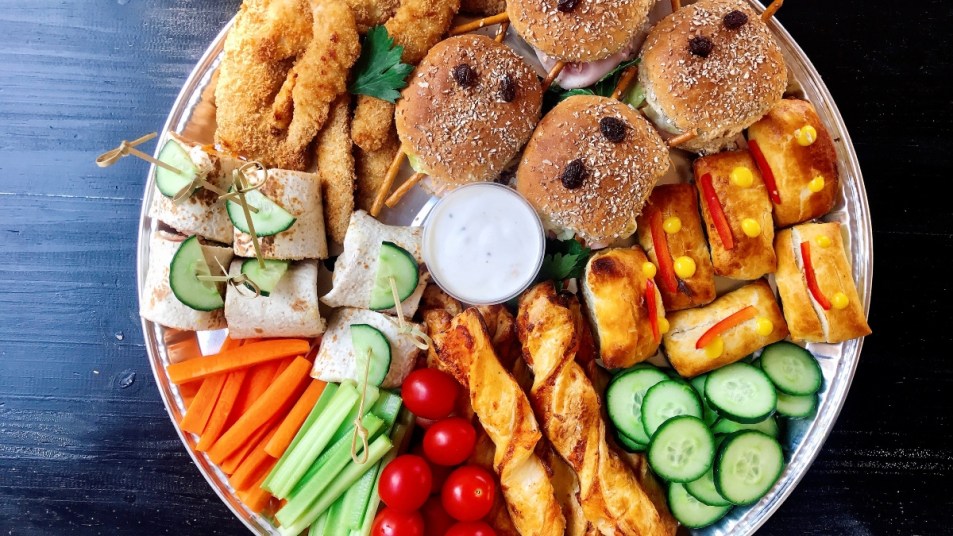Struggling To Get Your Kids To Eat Veggies? Try This Viral TikTok Hack: The Grazing Platter
Happy snacking!

As you watch your child push away yet another plate of broccoli, you might worry she was simply programmed to hate vegetables. You’ve tried so many tactics already: creating a one-pot meal where she can’t avoid the carrots, praising her when she picks up a celery stick, withholding play time until she finishes every bite. Sometimes, however, a passive method is the best route. (Remember that old story about the Sun and the Wind, who challenged each other to a test of strength? They wanted to see who could force a man to remove his coat. The Wind blew and blew, but the man hugged his coat tight to his body. Then, the Sun simply shone until the man felt so hot he removed his coat.)
That’s the idea behind the daily food platter. Often called the grazing platter, this method of encouraging kids to try new foods has been around for some time, but got re-popularized on TikTok. Here’s how it works: A platter full of bite-sized foods sits on the table all afternoon, and at the end of the day, parents check it out to see what was eaten. More often than not, kids end up eating the fruits and vegetables on the platter along with the crackers and cheese.
The Psychology Behind the Grazing Platter
Unlike sit-down dinners, a grazing platter gives kids the freedom of choice. Penn State University researchers note that choices give kids some control over their lives, empowering them and granting them a sense of independence. A food platter might sound like too much freedom, but remember: You decide what, and how much, goes on that platter every day. Crackers can be whole grain, and dips can contain beans and blended vegetables.
In addition, a grazing platter removes the pressure of mom and dad watching. Some kids don’t want to eat certain foods because they know they’ll get extra attention for doing so. Without the watchful eyes of a parent, a child may be more inclined to pick up a sugar snap pea.
@nicole.funnystuff The snack tray for kids! #pickyeaters #momsdoingstuff #parentinghacks #momanddad #twinmom #momhack
♬ original sound – Nicole.funnystuff
In this way, “bad” and “good” foods become more neutral; a child won’t feel shame or guilt for picking up a cookie after eating a carrot. When foods become more equal in terms of good or bad, vegetables become less of a “chore,” or something the child must eat, and more of a pleasant experience. Teaching your children from an early age that all foods have their place in a balanced diet helps create healthy eating habits, which your child will carry with her throughout her life.
How To Make a Successful Grazing Platter
@_melissaholguin we demolished this platter hehehe 🤭 idk why my kids eat better when their food is served on a platter or board 🤣 #kidsnacks #snackideasforkids #lunchideasforkids #lunchideas #kidslunchideas #toddlermom #mom #balancedeating #balancedeatinghabits #toddlersnacks #kidssnacks #afterschoolsnack #snackboardforkids #snackboard #snackplatter #snackplates
♬ See You Again – Miley Cyrus
What makes a successful grazing platter? Most parents who have tried it agree that it must feature foods your kids already know and love, with a few new or “adventurous” foods thrown into the mix. For instance, you might try a plate full of gold fish, clementine wedges, plain crackers, carrot sticks, apple slices, and ranch dip. (Squeeze lemon juice on top of the apples and other fruits that oxidize, and layer ice around the dip bowl.)
Finally, make sure you snack from the platter, too. Kids follow by example, so seeing you sample a bit of everything is a great way to passively encourage them to try new stuff. Happy snacking!
















